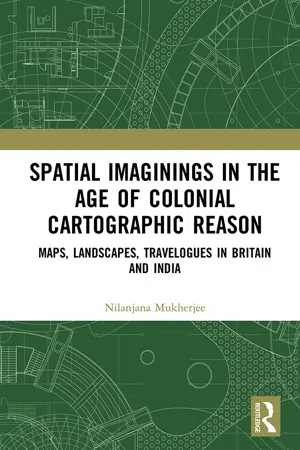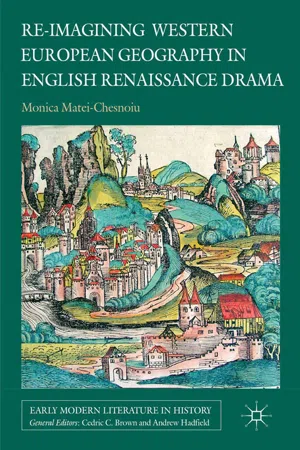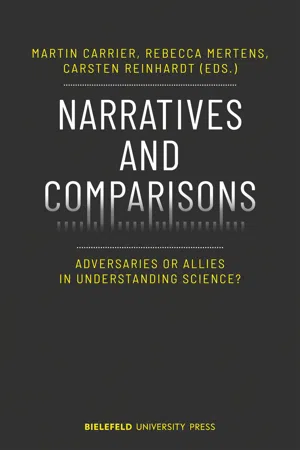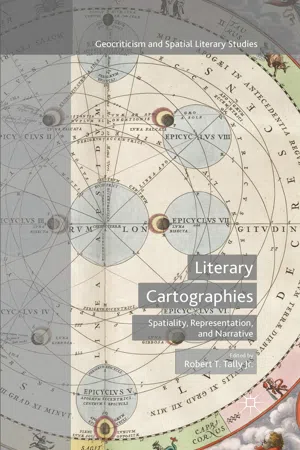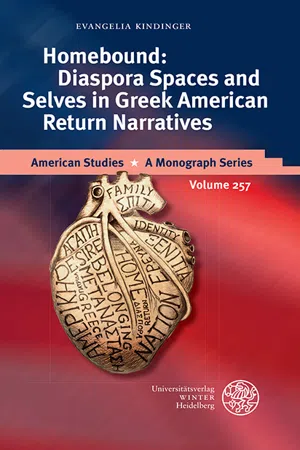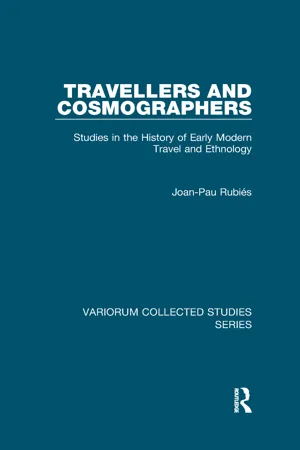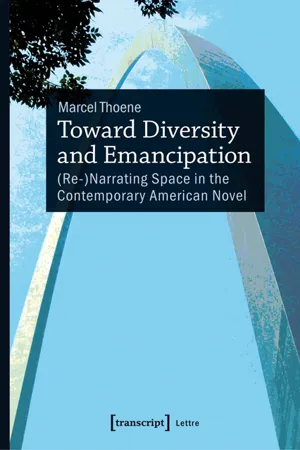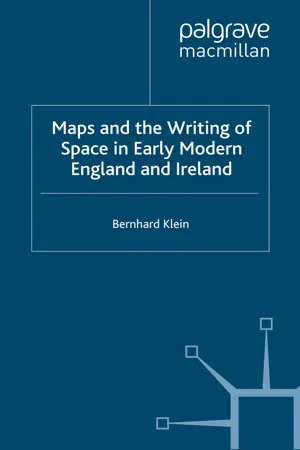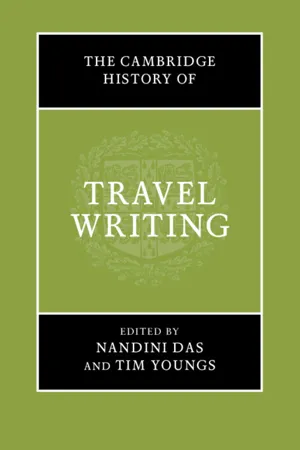Geography
Travel Narratives
Travel narratives are accounts of journeys and experiences in different geographical locations. They often provide insights into the cultural, social, and environmental aspects of the places visited. These narratives can be in the form of written texts, visual representations, or digital media, and they play a significant role in shaping perceptions and understanding of diverse landscapes and people.
Written by Perlego with AI-assistance
Related key terms
1 of 5
12 Key excerpts on "Travel Narratives"
- eBook - ePub
Spatial Imaginings in the Age of Colonial Cartographic Reason
Maps, Landscapes, Travelogues in Britain and India
- Nilanjana Mukherjee(Author)
- 2020(Publication Date)
- Routledge India(Publisher)
5Place and identity
Travel Narratives in the making of Britain
No place, not even a wild place, is a place until it has had that human attention that at its highest reach we call poetry.The Sense of Place , Wallace Stegner1An entry in the Penny Magazine , brought out by the Society for the Diffusion of Useful Knowledge, dated 16 June 1832, states:Everyone says that geography is one of the most useful things that can be learnt; yet nothing is learnt so ill, because nothing is taught so ill. Look into any of the elementary books of geography, and read what is said about England. First, we are told that it is divided into forty counties, then perhaps follows an account of the several law circuits and then after some short notices about religion, government, produce and manufactures, there are given lists of the chief towns, mountains, rivers and lakes. But all these things are given without any connexion with each other, and it is a mere matter of memory to recollect what is no more than a string of names. And if a man thus recollects them, still he is not much the wiser for them; he has got no clear and instructive notions about the country, but has merely learnt his map, and knows where to find certain names and lines upon it.2Clearly then, there was another way of doing geography, and that had to be one which drew connections between names and the physical terrains of the regions identified, and between the “hills” and the “rivers”.3 Narrative recounting of travels in those regions could secure the required connections and give a voice to the map. This chapter will try to find out how literature (especially of travel) is used for cartographic goals: to control, order or limn a place. In instituting an analogy between the discipline of geography and the art of writing, literature of travel pinpoints location and ushers untrammelled places into recognition by orienting them according to a coordinate system that unifies the globe. Whereas the study of cartographic procedures of mapping reveals processes of control of land and technologies of governmentality, symbolic representation of landscapes in literature can deal with land as perceived and experienced adding dimensions to the scaled down replica of regions. One would tend to believe that what is missing in planimetric maps, would likely be captured in such space–time based narrative strategies, such as socio-economic structures, emotions, tastes, smells and noises. “Literary geography” which has recently emerged as a critical method can prove to be quite helpful in understanding travelogues as rupturing the cartographic synchrony.4 - eBook - PDF
Contemporary Narrative
Textual production, multimodality and multiliteracies
- Fiona J. Doloughan(Author)
- 2011(Publication Date)
- Continuum(Publisher)
Clearly, in relation to the concept of travel, there are a number of relevant dimensions. Travel relates to mobility, in the sense of movement from one place to another; it also relates to temporality insofar as travel tends to take place in and over time. In addition, travel can be metaphoric rather than literal: ideas and customs, as well as people and goods, can travel and travel may take place in the world of actuality or in the world of imagination. The journey, in all its aspects, may, therefore, be seen as protypical of narrative in relation to both form and content, since it is concerned with movement in and progression over time on the part of a protagonist located within a particular world. Narratives of Travel and Travelling Narratives 109 The Art of Travel and In Arcadia will be used to illustrate different dimensions of travel and to point to differences between place and space. From the per-spective of tendencies in narrative today, they will be shown to be concerned with border crossing, both literal and metaphoric, and with the enactment of stylistic, thematic and organizational choices which accentuate the spatial dimensions of text by disrupting or seeming to suspend the temporal. These works may be seen as narratives of supermodernity insofar as they are struc-tured around journeys but seem preoccupied with non-places and liminal spaces. In the case of The Art of Travel , de Botton will be seen to focus on the ‘two complementary but distinct realities’ designated by the word ‘non-place’, that is ‘spaces formed in relation to certain ends (transport, transit, commerce, leisure) and the relations that individuals have with these spaces’ (Augé, 2008, p. 76). This will include fascination with the motorway and service station; and the airport terminal and departure lounge. - eBook - PDF
Under Eastern Eyes
A Comparative History of East European Travel Writing on Europe
- Wendy Bracewell, Alex Drace-Francis, Wendy Bracewell, Alex Drace-Francis(Authors)
- 2008(Publication Date)
- Central European University Press(Publisher)
The Travel Narrative as a (Literary) Genre David Chirico The study of Travel Narratives reveals the lack of grounding theory and analytical tools. […] The rea- son for this is doubtless that the travel narrative has often been seen essentially as a document (informing us about reality) or as a fragment of an autobiography (informing us about its author). Its status as a literary artefact is rarely brought to the forefront. 1 ASSUMPTIONS, QUESTIONS AND STUDIES Each of the essays in this volume looks at east Europeans who trav- elled within Europe. They came from different cultural traditions, travelled in different centuries and to different destinations, and had different aims, or no aim at all, in travelling. What all have in com- mon is that they wrote texts about their travels. The texts themselves are widely different: some long and some very short; some intended for publication, some private; some polemical, some descriptive, some lyrical, some driven by a narrative plot; some of high aesthetic value and some of none; some interesting and some astonishingly dull. It is implicit, however, in the decision to publish a collection of essays on east European travel writing, and indeed to publish bibliographies and anthologies of travel writing texts, that there is something in common, a set of features which enable a more or less clearly defined category to be drawn up, however provisionally, within which some texts can be included and from which some, just as importantly, can be excluded. One aim of this essay is to frame, and begin to answer, some ques- tions about the significance of the formal, thematic and social/histori- 1 Jean Viviès, English Travel Narratives in the eighteenth century: Exploring genres, trans. C. Davison (Aldershot: 2002). 28 Under Eastern Eyes cal factors which unite these texts. - M. Matei-Chesnoiu(Author)
- 2012(Publication Date)
- Palgrave Macmillan(Publisher)
Introduction: Dramatic Geographies of the Self 3 heterogeneous entities by means of specific categories. Like the stage, geography and Travel Narratives are fictional systems that require an infusion of imagination to make their illusion possible. Like drama, geography accomplishes the depiction of spaces not only through language and verbal argument, but through visual demonstration. Just as the stage challenges audiences with imaginative representations of other spaces, so geography, cartography, topography, and even naviga- tion, geometry, and land surveying provide an artificial means whereby the viewer may see a series of particular places – remote in time as well as in space – that could never fully be grasped by the naked eye alone. Spain, France, the Low Countries, the German principalities – with their physical features, cities, borders, trade, and notable buildings – are reducible to the same set of mimetic conventions that are juxtaposed to the frame of reality. As was the case with the skills necessary for designing nautical instruments, for instance, the process of geographical projection requires at once practical skill and poetic imagination. There is yet another aspect to the rapidly increasing mode of re- describing the world – in the manner of what D.K. Smith has called ‘the cartographic imagination’ 2 – in early modern England. Alongside the descriptive accounts of an increasingly larger world in travel texts, which offered an expansion of knowledge in the horizontal narrative dimension, cartography and geography provided a different appeal to the reader’s/viewer’s imagination. The geometrical and mathematical coordinates of a map may offer an apparently condensed description of a place, but the combination of visual perception, narrative description, and spatial representation enhances the broad range of cultural forces within which it is embedded.- eBook - PDF
Narratives and Comparisons
Adversaries or Allies in Understanding Science?
- Martin Carrier, Rebecca Mertens, Carsten Reinhardt, Martin Carrier, Rebecca Mertens, Carsten Reinhardt(Authors)
- 2021(Publication Date)
- Bielefeld University Press(Publisher)
At a later point in the travelogue, Humboldt gives a more detailed defi-nition of the historical narrative that significantly expands the catalogue of criteria while, at the same time, blurring the lines between dif ferent modes of writing: 26 Humboldt, Personal Narrative, 1, on p. xxxix. 27 Martínez, “Was ist Erzählen,” 2-5. Fludernik, Introduction to narratology, 6. Bal, Narra-tology, 79f f. and 214. Ryan, “Toward a definition of narrative,” 28f. Historical Narrative versus Comparative Description? 73 An historical narrative embraces two very distinct objects; the greater or less important events that have a connection with the purpose of the traveler, and the observations which he has made during his journey. The unity of composition also, which distinguishes good works from those on an ill con-structed plan, can be strictly observed only when the traveller describes what has passed under his own eye; and when his principal attention has been fixed less on scientific observations, than on the manners of a people, and the great phenomena of nature. Now, the most faithful picture of manners is that, which best displays the relations of men toward each other. The char-acter of savage or civilized nature is portrayed either in the obstacles which a traveller meets with, or in the sensations which he feels. It is the man himself that we continually desire to see in contact with the objects that surround him; and his narration interests us the more, when a local tint is spread over the description of the country and its inhabitants. 28 Again, Humboldt is identifying the chronological account of events as a spe-cific quality of a historical narrative. It is the representation of “events” and “observations” that the traveler “made during the journey” that defines the narrative. But Humboldt adds two further criteria concerning the focal point of the narrative and the narrator’s relationship to the world he narrates. - eBook - PDF
Literary Cartographies
Spatiality, Representation, and Narrative
- Robert T. Tally Jr.(Author)
- 2016(Publication Date)
- Palgrave Macmillan(Publisher)
Further, as readers, we cannot help but fit narratives or spatial representations into some sort of spatiotemporal context in which they make sense to us, thereby also becoming more or less useful to us, in our own attempts to give meaningful shape to the world in which we live. That is, these narra- tives, which are also maps, must be understood as themselves objects to be mapped. The senses of mapping narratives thus follow the tra- jectories of the subject and of the object; a narrative is simultaneously something that maps and something to be mapped. This dialectical tendency may not necessarily resolve itself in the unity of opposites à la Hegel but may maintain itself in dynamic tension, enabling new creative possibilities for both writing and reading. The essays in this collection, in one way or another, respond to this dynamic of spatiality and narrative in considering aspects of literary cartography. In recent years, as part of what has been called the spa- tial turn in the arts, humanities, and social sciences, literary scholars have focused greater attention on the relations among space, place, or mapping and literature. A number of critics have drawn attention to the ways in which narratives produce maps of the real and imaginary places represented, in both the form and content of the narratives. 6 4 Ro b e rt T. Ta l ly J r. The contributors to Literary Cartographies: Spatiality, Representation, and Narrative each address key aspects of narrative mapping while arguing for the significance of spatiality in general and comparative literary studies. Literary Cartographies surveys a broad expanse of lit- erary historical territories, including romance and realism, modernism and imperialism, and the postmodern play of spaces in the era of globalization. As such, this collection also provides a representative sample of work being done in this area by spatially oriented critics across a range of periods, languages, and literatures. - No longer available |Learn more
- Evangelia Kindinger(Author)
- 2015(Publication Date)
- Universitätsverlag Winter(Publisher)
As it is with travel writing, return narratives are often constructed as life narratives, presenting a highly self-reflexive self that goes on a journey away from home. Yet, there are crucial distinctions that need to be considered. Return narratives introduce a traveling self that has a personal, pre-established relationship to the destination of her or his journey; a relationship that results from diasporic, migratory or postcolonial circumstances. The paradox of addressing one place while sojourning in another that Steve Clark detects in travel writing is the paradox of return narratives 53 Adrianne Kalfopoulou, in Broken Greek (2006) writes about similar, even harsher experiences her narrative persona goes through, being patronized by Greeks, and also being constantly underestimated due to her inability to ex-press herself perfectly in Greek. The Fluctuation of Returnee Positions: Conclusion 85 and of diaspora (cf. chapter 1). As James Clifford holds in “Diasporas” (1994): “The empowering paradox of diaspora is that dwelling here assumes a solidarity and connection there . But there is not necessarily a single place or an exclusivist nation” (322, emphasis original). There in return narratives is constituted of two homes: the place of settlement and the other home and the place of ancestry. It is therefore a multiple and inclusive space. In comparison, there in travel writing is predominantly “a single place or an exclusivist nation.” While travel writing is writing about the nation, following the aim to formulate a national identity and a nationally embedded self, return narratives formulate identities beyond singular national affiliations; they write the diaspora and establish a transnational, diaspora consciousness. - eBook - PDF
Women At Sea
Travel Writing and the Margins of Caribbean Discourse
- NA NA(Author)
- 2016(Publication Date)
- Palgrave Macmillan(Publisher)
2 My purpose will be to scrutinize a narrative form (the slave narrative) by locating it within its material condi- tions of possibility (travel and the antislavery associations of nineteenth- century England) from the perspective of a hermeneutic category (contact zone), to gain some critical insights into all three. The trouble with travel writing From the material encounter of territories, peoples, and the natural habi- tats of travel, to the imaginative and experimental rehearsal of new logic that discourse makes possible, both travel and writing are practices that produce an other world. In this sense, travel and writing confront their pri- mary materialities (a foreign world and the semiotic universe of a particu- lar culture, respectively) as a referential. This "stuff" of travel and writing bring about the possibility of a playful passage (an entering and exiting) into the (un)known world. The dialectic of this nomadism of traveler and writer, this temporary (geographical, fictional, or theoretical) habitation in the realms of another world also constitutes the space of home, in the same manner as the apparition of the Othe2 (the one who inhabits that Other geography) and that of the other logic (the possible worlds lying dormant When the Subaltern Travels 101 or repressed within the very world the One inhabits) posits anew the sub- ject of home. In this respect, travel and writing are similar practices struc- turally situated between self, other, and discovery, the last of these constructs understood as the production of a certain knowledge, the open- ing up of a practical and/ or theoretical space in which the self is recreated and repositioned in a new configuration. These similarities, plus the fact that European travel has been historically linked to the practice of travel writing, has recently led to a critical erasure of their differences. - eBook - ePub
Travellers and Cosmographers
Studies in the History of Early Modern Travel and Ethnology
- Joan-Pau Rubiés(Author)
- 2023(Publication Date)
- Routledge(Publisher)
6 Rather, the growth of the European literature of travel, both overseas and within Europe, goes far beyond any Greek, Latin, Arab, Persian or Chinese precedents and parallels. It is in fact historically unique. It can be seen as a defining peculiarity (rather than a mere consequence) of the new kind of colonial imperialism created by Europeans in the early modern period, one which went beyond its otherwise crucial economic motivations, the desire for trade and bullion, or political ones, the fierce competition amongst rival European powers. The growth of travel literature was, more generally, a major element in the definition of Europe’s cultural transformation from its medieval background to its invention of modernity.In determining reasons for the growth of ethnographic travel writing in Europe it is crucial to analyse the relation between practical aims, ideological assumptions, and philosophical or scientific concerns. If we define ethnography as the description of peoples in their variety, a practice often ruled by implicit assumptions rather than by explicit theories, we may distinguish ethnology as a theoretical discourse on human unity and diversity (racial and cultural) which makes use of ethnography and is a subject of debate within a scientific (but not necessarily academic) discourse. The emergence of a formal scholarly discourse based on comparison, classification and historical lineage called ethnology (eventually as part of the academic discipline of anthropology with which it largely overlaps) is a nineteenth-century phenomenon.7 However, in reality both ethnography and ethnology existed previously within the humanistic disciplines of early modern Europe, in the primary forms of travel literature, cosmography and history, and also in the form of some specific debates, like those relating to the capabilities and origins of American Indians, the definition of ‘natural man’, the influence of climate on national characteristics, or the existence of stages in the history of civilization.8 On the back of the growth of travel literature both ethnography and ethnology were, in fact, crucial to the Enlightenment project of a world-historical science of mankind.9 However, whilst from the end of the sixteenth century one may argue that ethnological concerns sometimes lay behind the ethnographic impulse, more generally, and especially in the earlier centuries of European expansion, travel writing generated ethnography as a matter of course, quite independently from any specific intellectual agenda. Despite this variety of forms of travel writing, it may be possible to generalise that the desire for information, for mainly practical purposes, lies behind the growth of the European genre of non-fictional travel writing throughout the Renaissance. From the sixteenth-century collections of Richard Eden and Richard Willes, who published English translations of Iberian and Italian sources of the New World and Asia, and especially from the Principal Navigations of Richard Hakluyt, whose nationalistic program of English commercial and colonial expansion overseas did not impede a strong sense of the importance of the accurate reproduction of first-hand observations, many of the primary sources (European or English) published by these well-educated editors were written by merchants, soldiers and sailors charting unmapped territories, or by clerics who accompanied them – men with often immediate practical aims in mind.10 - eBook - PDF
Toward Diversity and Emancipation
(Re-)Narrating Space in the Contemporary American Novel
- Marcel Thoene(Author)
- 2016(Publication Date)
- transcript Verlag(Publisher)
4.2) “T HE L ONG AND W INDING R OAD ”: A B ASIC T A XONOMY OF S PATIALLY -I NDUCED N ARRATIVES The purpose of this (sub)chapter is to provide a categorical framework so as to illustrate the manifold forms which space and spatiality can take in the genesis, discourse and mediation of literary narratives. The approach will be neither purely literary nor purely cultural or historical, but will utilize those parts from these fields which best lend themselves to a transmission to the realm of narrative. The first aspect under which literary narratives can be regarded spatially is the geographical level. The geographical narrative comprises texts which, at their core, feature one or more specific location(s) as a center of literary attention. This reflects what Marie-Laure Ryan (2003) presents as “[t]he actual space, or geographical context in which the the text is produced, or to which the text refers. The mapping of this space is a matter of literary historiography.” (336) However, in this approach, this is only part of the equation. Ryan in her elaboration combines intra- and extra-textual levels insofar as she ties the literary representation of geography to literary history. While true that whatever is narratable must be historicizable, the disconnection between narrative representation and academic discipline at this point is insufficient. Instead, it is necessary to free the geographical level from its constraints in terms of being the historical container of narrative action. While historicization must occur, it must be thought from the point of view of space at least partially eliciting the narrative action. In this manner, space’s characteristic reciprocity can be achieved, ultimately resulting in the prominence of space as a vehicle of narrative progression. Indeed, the term progression deserves further clarification, for it subsumes the space-time intersection, which is a key methodological concept underlying all narrative. - B. Klein(Author)
- 2001(Publication Date)
- Palgrave Macmillan(Publisher)
In its reflec- tion of a world ‘out there’, a map needs to import into its visual display certain properties of the original it purports to represent; 6 indeed, its claim to convey an ‘accurate’ representation of geographical fact rests on the degree of identity it manages to establish between itself and its object of description. Narrative accounts of space, however, rely on rhetoric, on the implicit understanding that what is classified as the 138 Narratives ‘real’ is nothing but the raw material of a linguistic effort that aims to reproduce the substance of the world as a string of verbal figures. Within their preconceived representational forms written chorographies could thus shape images of the physical world with more interpreta- tive freedom even than maps. The difference between the two textual models most frequently employed by topographical narratives corre- sponds to the conceptual distinction between plan and itinerary – two descriptive modes informed, respectively, by the external, static knowl- edge of the chart and the internal, dynamic experience of the voyage. Neither textual form supplied simply a neutral geographical frame. In the description of Britain, opting either for systematic control (of the plan) or operational uncertainty (of the journey) was never merely an aesthetic choice. In each case the resulting narrative entailed a moral and political outlook which shaped a specific version of national space at the cost of excluding another. And as we shall see, in descriptions of Ireland, where the ground level experience of Irish difference yields to its rhetorical effacement from above, the spatializing strategies of itin- erary and plan are again enlisted, though in rather unexpected ways, to support English political reform plans.- eBook - PDF
- Nandini Das, Tim Youngs(Authors)
- 2019(Publication Date)
- Cambridge University Press(Publisher)
Apps such as Periscope allow people to share travel experiences in real time, offering a new and dynamic platform for travel writing. Travelling online to a potential destination is a natural precursor to going 504 there physically, in much the same way as reading about a place would have been in an earlier era. Yet the profusion of vicarious travel possibilities now available digitally would have seemed miraculous even a few decades ago, let alone for those living in earlier centuries. By today’s standards, the accounts of voyages and travels in centuries past were accessible to a very small reading population. The reach of digital communications reflects increased literacy, and vast audiences now consume travellers’ accounts in their myriad forms, both textual and visual. In fact it may not be possible to experience a ‘new’ place in a unique way in our era of digital copies, simulations, and travel impressions and recommendations that predetermine our paths and ways of seeing, making it seem increasingly difficult to be tantalised by a distant locale in the same way as in the past. This global familiarity arguably influences the constitution of the self in today’s travel writing. To put the issue diachronically: have travel and the reception of Travel Narratives fundamentally changed, or are the shifts from ‘real’ to virtual, large as they appear, better thought of as extensions of earlier modes of travelling and interpreting? Linear organisation of early modern Travel Narratives mirrored the ways in which people moved through physical space, and was closely linked with the history of exploration and discovery. 1 Narrative genres in the seventeenth and eighteenth centuries emerged during a period of unpre- cedented travel and the development of new technologies for navigation. In the digital age, the traversing of non-physical space has continued to be thought of in sequential narrative terms.
Index pages curate the most relevant extracts from our library of academic textbooks. They’ve been created using an in-house natural language model (NLM), each adding context and meaning to key research topics.
